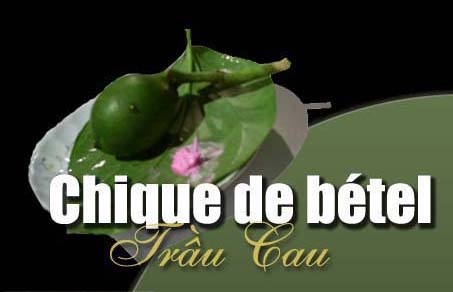The betel quid
Long time ago, under the reign of king Hùng Vương the 4th, there were two twin brothers, Cao Tân and Cao Lang. They looked so much alike that it was difficult to distinguish one from the other. They both attended the school of an old teacher in the village who had a sole daughter whose beauty attracted all the homage of all the young men in the area.
The old teacher liked both of them. He would grant his daughter’s hand to one of them, preferably the elder because according to Vietnamese customs, the elder brother would get married first. In order to be able to distinguish them, he relied on a little trick by inviting them for dinner. The one who first picked up the chopsticks would be the elder. So Cao Tân got the hand of his daughter without any doubts that his younger brother has devoted an ardent love to her. They went on to live together in a complete harmony and experienced a faultless happiness.
Cao Tân continued no less to love his younger brother like ever before and would do anything to make him happy.
However, in spite of that, the younger brother could not rid of the pain in his heart. He decided to leave them and went out for an adventure. After so many days of walking, he ended up falling exhausted on the road and was transformed into a block of lime stone with an immaculate white.
The elder brother, taken by growing worries for his younger brother left in search for him. He followed the same road taken by his younger brother. In a beautiful morning, after so many days of walking, he arrived at the lime stone block, sat on it and succumbed without movement. He was metamorphosed in to a betel nut tree growing tall with its green palms and oblong little fruits. The tree began to extend its branches and its shadow over the lime stone mass as if to protect it from the changes of weather.
Staying at home without any news from her husband, the young wife in turn left the house and went for a search of her spouse. She roamed fields, crossed villages and finally one day, she came real close to the tree. Tired by the long walk, she leaned back at the foot of the tree, took her turn to die and change into a plant whose stems curled around the trunk of the tree with large intensely green leaves in the form of a heart.
The betel quid
This is one of Vietnamese customs to be observed at a marriage ceremony. There is always betel, with betel nut and intensely green leaves in the form of a heart that is part of wedding gifts that symbolize an eternal union.

